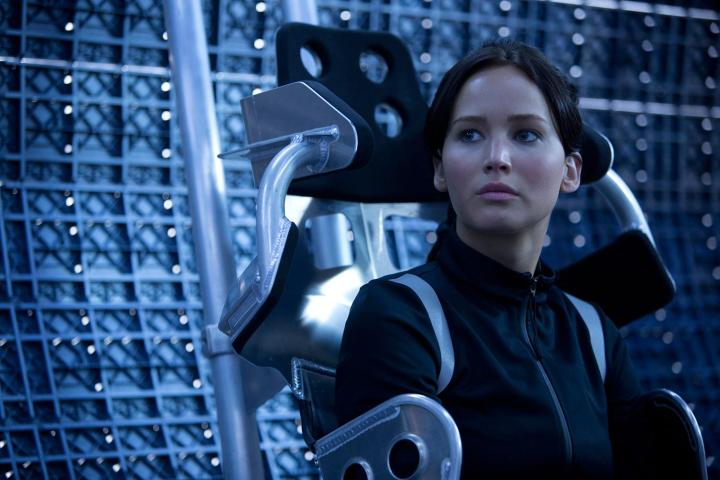Thanks to the success The Hunger Games in 2012 and Jennifer Lawrence’s newfound status as a bona fide star, The Hunger Games: Catching Fire is almost primed to be a massive hit whether it’s any good or not. Thankfully for the legions of fans determined to see it either way, it’s also an all-round better film that improves on its predecessor’s mistakes.
The Hunger Games wasn’t a bad movie by any means, but it struggled to balance loyalty to its source material with the need to tell a good visual story. A few story elements fell flat, like the contrived and unnecessary love triangle, and the cursory representation of the world that created the bloodsport games.
Those problems were minor though, and the film went on to make more than $691 million worldwide, not counting the home-media sales. Three more films were immediately commissioned, putting a huge amount of pressure on Catching Fire to fix the errors of the previous film, while simultaneously paving the way for the two-part finale. It does that thanks to a combination of exceptional actors, a more thoroughly developed tone, and a new director, Francis Lawrence, whose hiring borders on inspired.
The games are more than an action event, they are a tragedy.
The sequel picks up shortly where the previous film ended, with Hunger Games survivors Katniss Everdeen (Jennifer Lawrence) and Peeta Mellark (Josh Hutcherson) back home in the squalor of District 12. The sinister President Snow (Donald Sutherland) informs Katniss that she has inadvertently become a symbol of resistance, and that on her upcoming victory tour of the districts, she and Peeta must convince everyone of their love and support of the Capital City, or risk her family’s safety.
Despite her efforts, the districts are on the brink of exploding into open rebellion, and they look to Katniss as a symbol. With the 75th Hunger Games looming, Snow and the new Head Gameskeeper Plutarch Heavensbee (Philip Seymour Hoffman), decide to let the people see her at her worst. The new games select tributes – forced participants – from previous victors, which lands Katniss back into the games against seasoned and experienced killers.
The first film was about the games, and Katniss’ survival. We saw flashes of a decadent society lording over an oppressed population, but the focus on the action made it difficult to get more than an impression of the world, which made it tough to accept certain parts, like the indifference of the population. Catching Fire more thoroughly explores this societal imbalance.
The games are more than an action event, they are a tragedy, and a reflection of a broken and fragile society that created them. Catching Fire expands our view of that world, giving it a weight that was absent before.
The obscenity of the games is driven home through the poignant performance of Elizabeth Banks, as Effie Trinket, admittedly a minor role. In the first film, Effie encapsulates the mentality of the Capital citizenry. Despite her growing bond with Katniss, she operates under the shallow, vapid mentality of a Capital citizen, unaware or unable to empathize with the tributes she knows are about to die. In Catching Fire, she struggles to maintain her mask of indifference, giving her a far more human visage, which contrasts both her earlier characterization and the nature of life in the Capital versus the districts.
Joining Banks are several talented actors, many of whom shine in minor roles. Jeffery Wright (W, Quantum of Solace) and Amanda Plummer (Pulp Fiction, Red) take up a fraction of the screen time as a pair of bitter tributes called back to die. Along with Hoffman’s Heavensbee, they give a credibility to the film that wasn’t entirely there last time in the supporting cast.
Lawrence also has more to work with this time, showing far more range than in the previous movie.
Lawrence also has more to work with this time, showing far more range than in the previous movie. Part of that simply comes down to where the character goes in the story, but some of that is credit to the new director Francis Lawrence (Water for Elephants, I Am Legend).
Francis Lawrence comes from a music-video background, which turns out to be a good match to cope with the lack of dialog from the often-taciturn Katniss. A huge part of her role boils down to quick shots, glancing looks, and non-verbal plot points. At several moments in the film, decisions are made based on a single look. Francis Lawrence is able to quickly set it up to tell a story purely through visual cues.
The weakest part of Catching Fire once again comes from a forced love triangle – which can be traced back to the book – brought to the screen by Hutcherson and Liam Hemsworth as Katniss’ possible lover Gale Hawthorne. It is an afterthought, more there because it is expected in stories like these (YA-born properties) than because it helps the plot.
Conclusion
Catching Fire shifts the focus from the Hunger Games to the world that created them, and the series is much better for it heading into the next chapter. The scope is bigger, and the story is richer as a result. The cast is in place, the director is locked in, and moving forward the series appears to be in good hands.
(Images and video © Lionsgate)
Editors' Recommendations
- The best video game movies of all time
- If you’re done with Palworld, try this monster-catching game next
- 2023 was a renaissance for strategy games. Enjoy it while you can
- Our favorite Switch games of 2023: Tears of the Kingdom, Mario, and much more
- The maker of No Man’s Sky revealed its next ambitious game: Light No Fire






